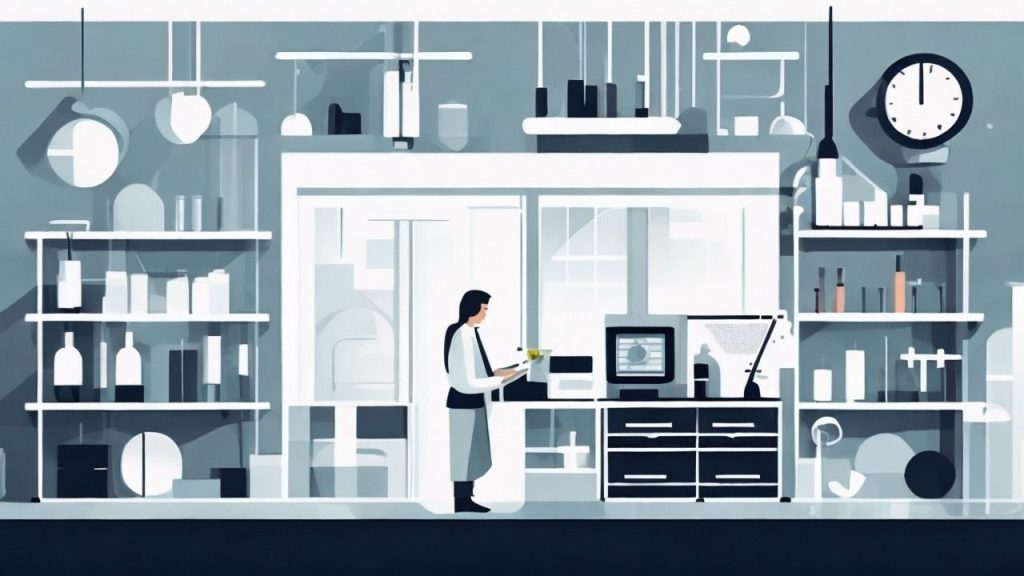Gastric cancer risk factors:
Gastric cancer is one of the major causes of morbidity and mortality worldwide. It occurs when tumors develop in the stomach’s mucous membrane. The stomach is an essential digestive organ located in the upper abdomen, connecting the esophagus to the small intestine. It is responsible for storing and digesting food. Initially, symptoms of gastric cancer include discomfort, bloating, and pain in the stomach, which are often mistaken for gastritis or ulcers and not given enough attention. By the time symptoms become severe and even a mass can be felt in the upper abdomen, it is often too late to detect gastric cancer at an early stage through X-ray examinations.

(1) Gastric cancer risk factors:Dietary Factors
Dietary factors are closely related to the occurrence of gastric cancer. In recent years, the incidence of gastric cancer has been decreasing in developed countries in Europe and America, mainly due to changes in dietary habits. Traditional methods of food preservation, such as smoking (smoked fish, smoked meat) and salt curing, result in the presence of carcinogens such as benzo[a]pyrene and nitrosamines in the food. High concentrations of dietary salt are also considered to be carcinogenic.
Foods fried or cooked at high temperatures contain certain amounts of polycyclic aromatic hydrocarbons, which are also carcinogenic. In Japan, talc powder is commonly used to treat rice, but it contains asbestos fibers, which are carcinogenic. High-salt foods such as cured meat, salted fish, pickles, preserved vegetables, cured bacon, and sausages have also been associated with gastric cancer due to their ability to damage the gastric mucosa and facilitate the absorption of carcinogens by the body.
A study conducted in Henan Province, China, showed a significant positive correlation between salt consumption and gastric cancer mortality (higher salt consumption was associated with higher gastric cancer mortality). In certain populations, deficiencies in protein, fat, certain vitamins, and minerals lead to imbalanced nutrition, which in turn lowers the host’s immune system and directly or indirectly triggers gastric cancer.
(2) Gastric cancer risk factors:Nitrosamines and Other Chemical Substances
Currently, through experiments, it has been discovered that various structurally different nitrosamine compounds can induce gastric cancer in animals. Investigations in high-risk areas for gastric cancer have found significantly higher levels of nitrates and nitrites in drinking water and food compared to low-risk areas. Under appropriate pH conditions or bacterial action, nitrates and nitrites can synthesize carcinogenic nitrosamine compounds in the human stomach.
Some cured meat, fish, poultry, and vegetable products, as well as foods treated with nitrites such as sausages, ham luncheon meat, and cured meat products, also contain small amounts of nitrosamine carcinogens. Additionally, there have been reports of the presence of nitrosamine compounds in certain cheeses, milk, flour, wine, and other similar products. Nitrosamine compounds are used industrially as agents, lubricants, rust inhibitors, and in agriculture as pesticides and defoliants, which can lead to occupational exposure.
(3) Gastric cancer risk factors:Mycotoxins
Epidemiological investigations have revealed significant fungal contamination in grains and food in high-risk areas for gastric cancer in China. The detection rate of fungi and their toxins in fasting gastric fluid of patients with chronic gastritis in high-risk areas is significantly higher than that in low-risk areas for gastric cancer. Various fungi such as Aspergillus flavus, Aspergillus ochraceus, and Aspergillus nidulans have been detected in gastric fluid, and their mycotoxins, such as aflatoxin and ochratoxin, can induce gastric cancer in rats.
(4) Smoking and Alcohol Consumption
The incidence of gastric cancer is significantly higher in individuals who smoke long-term. The longer the duration of smoking, the higher the risk of gastric cancer, as smoking has carcinogenic and promoting effects on the stomach. Long-term alcohol consumption also synergizes with other factors to increase the risk of gastric cancer.
(5) Helicobacter pylori (Hp) Infection
Infection with Helicobacter pylori (Hp) in the stomach is one of the important factors contributing to the development of gastric cancer. The World Health Organization has classified Hp as a Group 1 carcinogen for human gastric cancer. The different strains of Hp bacteria can lead to variations in the occurrence of gastric cancer. In 1994, Forman suggested that 35% of gastric cancer cases in developed countries and 85% in developing countries are associated with Hp infection.
Some researchers believe that Hp infection may act as a synergistic carcinogenic factor for gastric cancer. Literature reports have shown that the infection rate of Hp in adults in high-risk areas for gastric cancer in China is over 60%, which is higher than the infection rate in low-risk areas (13% to 30%). Hp infection in the stomach can significantly reduce the vitamin C content in gastric juice and can lead to precancerous conditions such as atrophic gastritis.
(6)Genetic factors
Most retrospective survey materials believe that the role of genetic factors in the etiology of gastric cancer is relatively certain, and there is a tendency for obvious family aggregation. It is generally believed that the incidence of gastric cancer among relatives of gastric cancer patients is 4 times higher than that of the control group.
(7) Intracellular hypovitaminosis
The levels of vitamin C and β-carotene in the plasma and tissues of gastric cancer
patients are significantly lower than those in non-gastric cancer patients. Studies have shown that the levels of plasma vitamin C, vitamin A, vitamin E, and β-carotene are negatively correlated with the mortality rate of gastric cancer.
Consuming raw fresh vegetables, fruits, and foods rich in plant fibres can reduce the risk of gastric cancer. The reason may be that these foods are rich in antioxidant nutrients such as vitamin C, vitamin E, carotenoids, etc., which are beneficial to the body’s resistance to carcinogen attacks, helping to degrade carcinogenic metabolites and repair body damage. Plant fibres can promote intestinal peristalsis and shorten the contact time between carcinogens produced by intestinal bacteria and the intestinal mucosa, thereby reducing the incidence of gastric cancer.
(8) Precancerous diseases and lesions
- Chronic atrophic gastritis.
Gastric cancer is closely related to chronic gastritis, especially atrophic gastritis. The incidence of this type of gastric cancer is related to the severity and duration of atrophic gastritis. Due to chronic atrophic gastritis, the mucosal function and structure are abnormal, the free acid in gastric juice decreases, and the bacteria in gastric juice increases, resulting in an increase in the synthesis of nitros compounds (nitrosamines). Nitros compounds have been proven to be carcinogenic. Data show that about 10% of patients with chronic atrophic gastritis develop gastric cancer, while only 0.6% of the control group develop gastric cancer. In gastric cancer, more than 80% are complicated with chronic atrophic gastritis. Chronic atrophic gastritis, which is combined with intestinal epithelial hyperplasia, is more closely related to the occurrence of gastric cancer. Foreign reports indicate that patients with atrophic gastritis who also have pernicious anemia have a 4-fold higher incidence of gastric cancer than those without pernicious anemia. - Gastric ulcer.
The incidence of cancer transformation at the site of gastric ulcer varies among different reports, with domestic data ranging from 6% to 18%. Japanese scholars found a cancer transformation rate of 2% based on surveys. In areas with a high incidence of gastric cancer, the incidence of gastric ulcer is also high. - Gastric polyps
Most are inflammatory hyperplastic polyps, while a few are adenomatous polyps, which are precancerous diseases. The cancer transformation rate is higher in multiple polyps than in single polyps. When the polyp diameter is greater than 2cm, the possibility of malignancy is high. According to literature reports, the malignancy rate of polyps ranges from 1% to 18% or higher. In Japanese Sono’s data, the malignancy rate of polyp without a pedicle is 2%, that of pedicle polyps is 7.2%, and that of flat polyps is 47.3%, with an average of 11%. - Residual stomach
The incidence of gastric cancer in the residual stomach left after partial gastrectomy ranges from 1% to 5.5%. If the vagus nerve is resected, the incidence of residual gastric cancer after surgery is higher. Residual gastric cancer usually occurs 15 to 20 years after gastrectomy. - Dysplasia of gastric mucosa
This lesion can be divided into three grades based on the degree of involvement: mild, moderate, and severe. It is a reversible lesion. Severe dysplasia is very close to cancer and is an important precancerous lesion. Close observation and follow-up are necessary.

